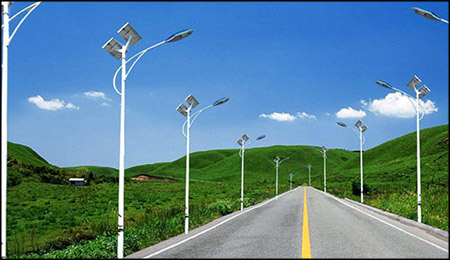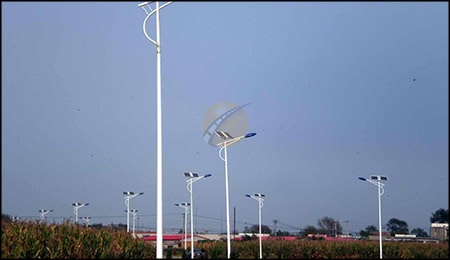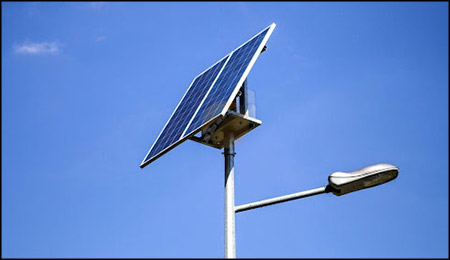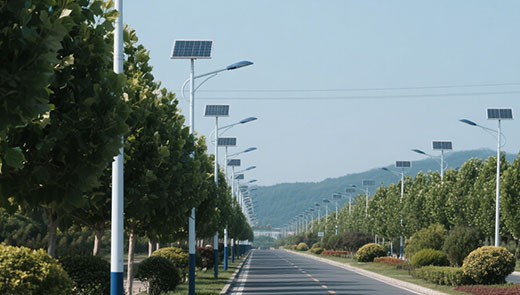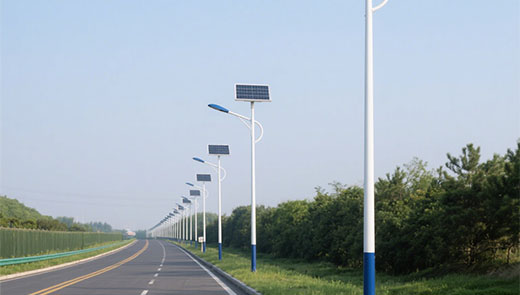The Disadvantages of Solar Street Lights: Challenges in Sustainable Lighting
Sep 13, 2024
Solar street lights have gained popularity as an eco-friendly and energy-efficient alternative to traditional grid-powered lighting. By harnessing solar energy, they reduce electricity costs and contribute to environmental sustainability. However, despite their numerous advantages, solar street lights come with several challenges that limit their widespread application. This article explores the disadvantages of solar street lights, focusing on technical, environmental, and economic factors that engineers and planners must consider.
Proper maintenance is essential to ensure solar street lights function efficiently. Batteries, solar panels, and LED lights must be inspected regularly, cleaned, and tested for wear and tear. This upkeep adds to the long-term operational costs, particularly in large-scale installations.
Moreover, battery capacity can be further reduced by extreme temperatures, especially in very cold or hot climates. Batteries in cold conditions can lose efficiency, while excessive heat can shorten their lifespan, making solar street lights less reliable in extreme environments.
Additionally, if a large-scale installation is planned, the area’s geographic and topographic conditions must be thoroughly assessed to ensure that each solar street light receives adequate sunlight throughout the day.
Despite their advantages, solar road lights come with a set of challenges that can limit their effectiveness in certain applications. High upfront costs, weather-dependent performance, maintenance requirements, and issues related to energy storage and theft all need to be considered when planning solar street light installations. For engineering and infrastructure projects, careful evaluation of these disadvantages is essential to determine whether solar street lights are a viable and cost-effective solution. While they represent a step toward sustainable urban development, addressing these challenges is critical for the broader adoption of solar street lighting systems.
1. High Initial Cost
One of the main disadvantages of solar street lights is their high upfront cost. Solar lighting systems require solar panels, rechargeable batteries, LED lights, controllers, and durable poles—all of which can significantly increase the initial investment compared to traditional streetlights. While solar street lights offer long-term savings on energy bills, the higher capital expenditure may not be feasible for municipalities or developers with tight budgets. In many cases, the return on investment (ROI) might take several years to realize, which can deter some decision-makers.2. Weather-Dependent Performance
Solar street lights rely entirely on sunlight to generate energy, which makes their performance highly dependent on local weather conditions. In regions with extended periods of overcast skies, rain, or snow, the solar panels may not collect enough energy to fully charge the batteries, leading to reduced lighting output or shorter operating hours at night. Additionally, in areas with harsh winters, snow can cover solar panels and block sunlight, further decreasing energy generation.3. Limited Battery Life and Maintenance Requirements
The batteries used in solar led street lights store energy collected during the day and power the lights at night. However, most rechargeable batteries have a limited lifespan, typically ranging from three to five years, depending on the quality and usage. Over time, battery capacity degrades, reducing the amount of energy stored and the efficiency of the lighting system. Replacing these batteries can be costly and requires regular maintenance, which may offset the initial savings from lower energy costs.Proper maintenance is essential to ensure solar street lights function efficiently. Batteries, solar panels, and LED lights must be inspected regularly, cleaned, and tested for wear and tear. This upkeep adds to the long-term operational costs, particularly in large-scale installations.
4. Vandalism and Theft Risk
Since solar street lights are standalone units that operate independently of the grid, they are often more vulnerable to vandalism and theft, especially in remote or unmonitored areas. The solar panels and batteries are valuable components that can be targeted by thieves, and damage to any part of the system can lead to costly repairs or replacements. This risk is particularly concerning in developing areas where infrastructure security may be lacking, and it increases the overall maintenance burden for municipalities.5. Lower Light Intensity
Street lights, particularly in budget installations, may not provide the same level of brightness as grid-powered lighting. While modern LED technology has made solar lighting more efficient, the intensity of solar-powered lights is often lower, especially in high-traffic urban areas or large spaces like highways and parking lots that require high lumen output. Insufficient lighting can affect safety and visibility, making solar street lights less suitable for some applications, such as busy city streets or industrial zones.6. Energy Storage Limitations
Solar street lights depend on batteries to store energy, and these batteries have finite storage capacities. In areas with long nights or limited sunlight during the day, such as regions near the poles in winter, the stored energy may not be sufficient to keep the lights running for an extended period. This limitation can result in reduced operating hours, leaving roads and public spaces dimly lit or entirely dark at night.Moreover, battery capacity can be further reduced by extreme temperatures, especially in very cold or hot climates. Batteries in cold conditions can lose efficiency, while excessive heat can shorten their lifespan, making solar street lights less reliable in extreme environments.
7. Complex Installation in Some Areas
While solar outdoor lights are generally easy to install compared to traditional streetlights, installation can be challenging in certain environments. For example, areas with heavy tree cover, tall buildings, or other obstructions that block sunlight may not be suitable for solar lighting. In such cases, finding an optimal location for solar panels can be difficult, potentially requiring additional site preparation, such as cutting down trees or clearing obstacles, which increases costs and complexity.Additionally, if a large-scale installation is planned, the area’s geographic and topographic conditions must be thoroughly assessed to ensure that each solar street light receives adequate sunlight throughout the day.

